All for the beans
The impressive mountain scenery of the Glarner Alps rises behind the factory building. Here, in Schwanden, Switzerland, Christian Sagehorn knows all of the mountains by their names. Tödi, Groß Ruchen, Vrenelisgärtli. Is he a fan of the mountains himself? “Nope”, replies the sales manager at Olympia succinctly. That might be due to the fact that he is from the Wendland, northern Germany, where the highest summit is 147 metres high. But the 61-year-old didn’t move to Switzerland because of nature, but because of coffee. Because of the coffee makers, to be precise. And not just any machines. The New York Times hailed the Cremina 67 by Olympia “the best espresso machine in the world” in the 1970s.
Inventor Luigi Bresaola had founded the company in Ticino forty years prior to that. He kept on making improvements to his machines, at first for the catering trade. Then he started to build such machines for private homes in the 1960s – with success. Their robust reliability, compactness and simple Swiss design enjoyed huge demand, especially in the USA. The company grew to 100 employees. But the 1980s saw an economic downturn. Efforts to make the machines more affordable while maintaining their high quality standards failed. There were only a small handful of employees left towards the end of the 1990s. Back then, former banker Heinrich Linz developed an interest in the manufacturer. He recognised its potential and bought the company. He made his brother-in-law Christian Sagehorn sales manager. When you hear him talk today about espresso and how to make it with dedication and attention to detail, it is hard to believe that he was a car dealer in Lüchow-Dannenberg back in the day.
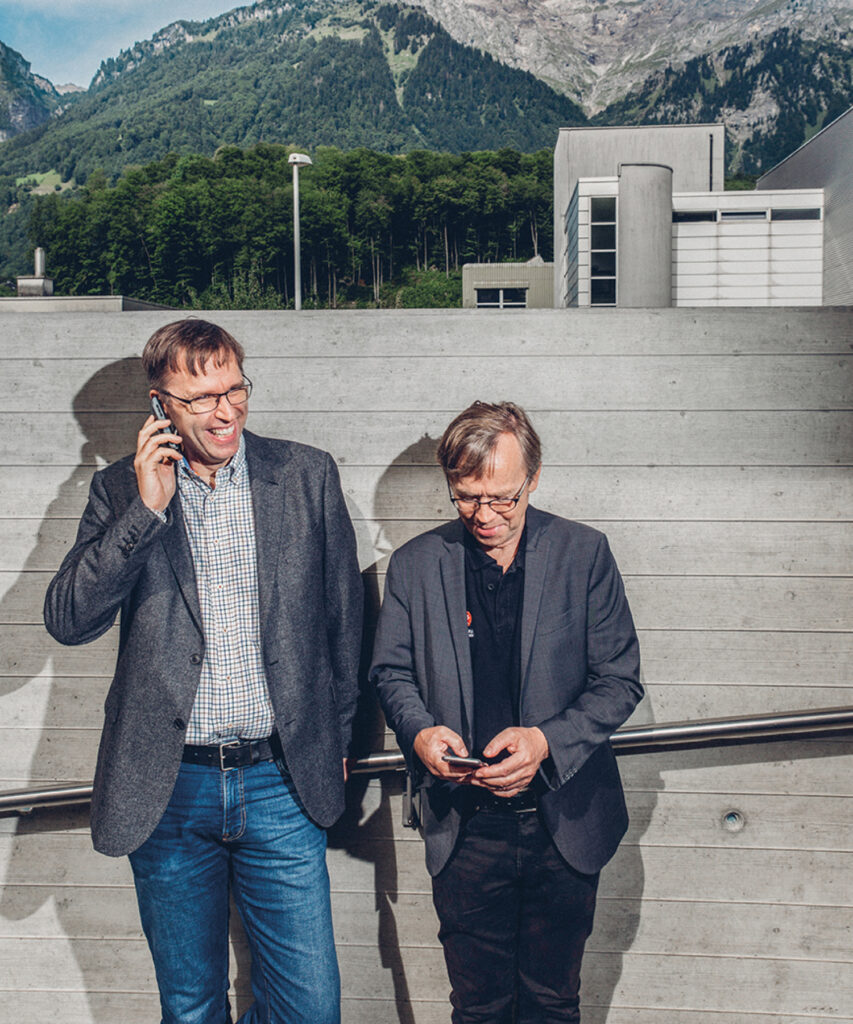
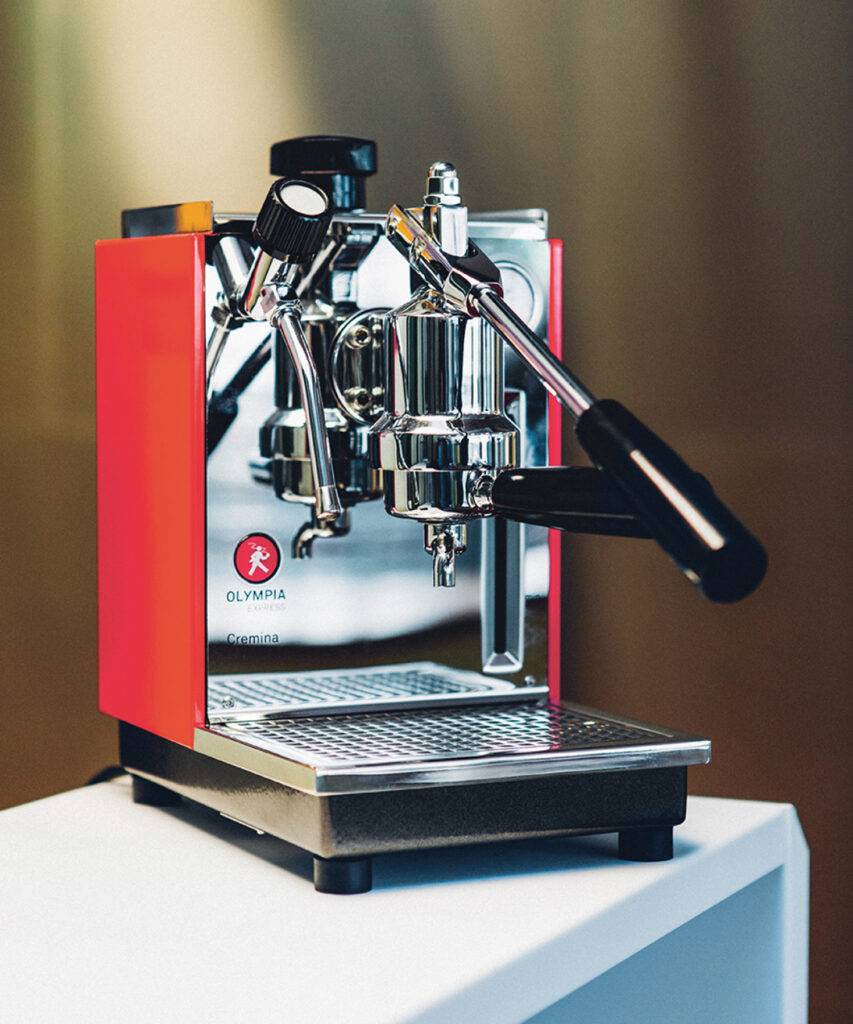
In contrast to Christian Sagehorn, Thomas Schätti was born and raised in Schwanden just like his ancestors. He has known the surrounding factories since his childhood. And he also knows the Linth, of course. The region owes its ascent to an industrial region to the river – transforming Schwanden into the Manchester of Switzerland, as they say around here. Together with his two brothers, the 52-year-old heads up the metalworking company Schätti, which his grandfather founded in 1934. It was initially intended to be an installation company. His parents expanded the workshop until it became an industrial business. Fittings and mechanisms for furniture have been manufactured here ever since. He pictures the future of the company differently though. “We want to produce our own products more and more”, he says. Preferably with an elevated design standard.
It was therefore a fortunate coincidence that Christian Sagehorn walked through the door one day in 2008 looking for a supplier for chromium steel components. Sagehorn knew at the time that the traditional manufacturer wouldn’t survive as a business on its own. Since Thomas Schätti was looking for a prestigious product, he bought Olympia and took over the production.
Christian Sagehorn gently lifts the hand lever of the Cremina so that a small amount of water is drawn into the piston chamber and flows into the coffee powder freshly ground by the Moca grinder, causing it to swell up. Then he presses the lever downwards. The oily brown liquid slowly drips into the thick ceramic mugs and the spicy odour of coffee fills the room. “I guess nobody has made as much coffee with a Cremina as me”, Sagehorn says.
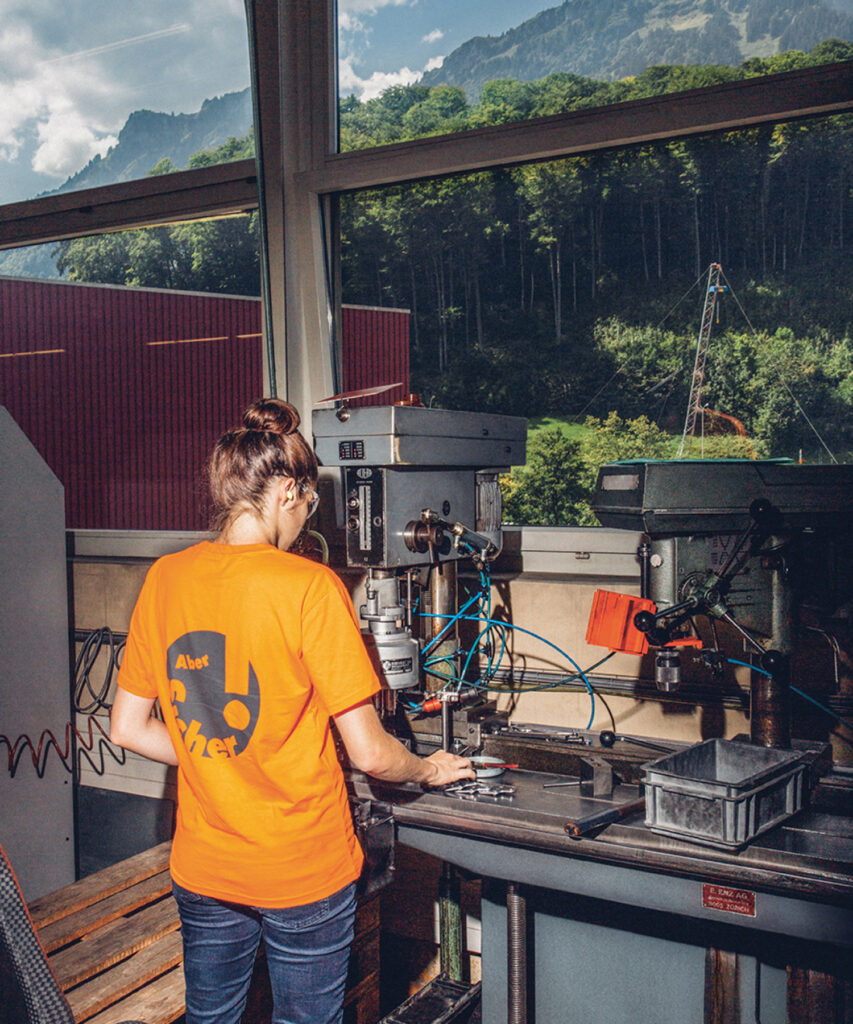
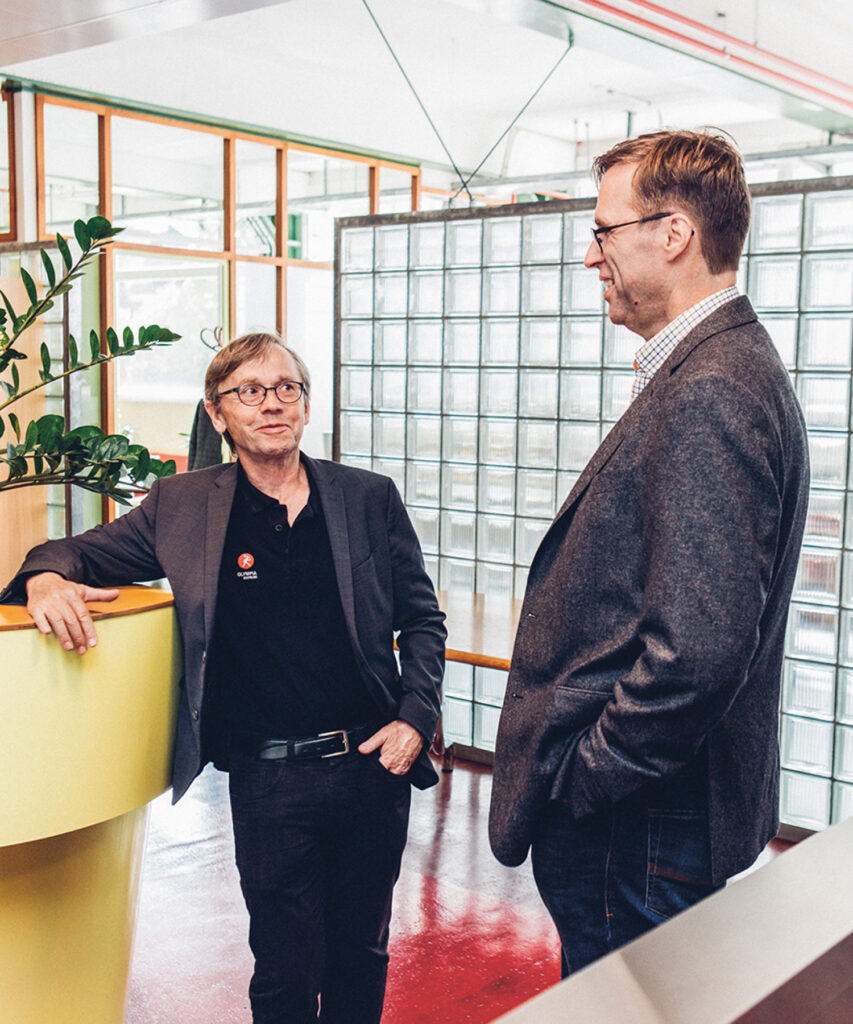
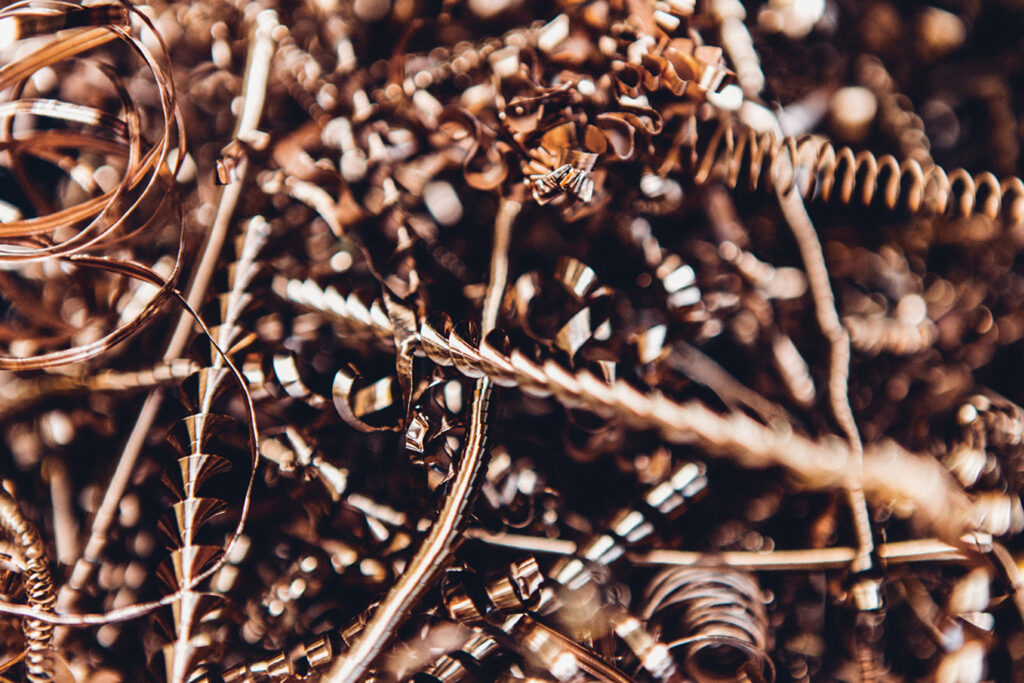
“They say that it takes 10,000 hours to really learn a craft”. It needs certain skills to make a good espresso. How much coffee powder do I use? 15 or 16 grams? How finely ground should it be? What’s the ideal extraction time? How long can the coffee percolate without releasing bitter substances and acids? “That’s like learning an instrument”, he says. And just as someone learns how to make music with an instrument, trained users can brew their entirely individual coffee and discover it anew with every single mug. “It’s a sensual ceremony”, says Sagehorn. He also teaches the art of coffee-making in classes for coffee baristas at the showroom in Glarus, as well as during his regular visits to Manufactum, which is one of Olympia’s main sales partners. He says that this is not about “raising nerds”, but rather about feeling – just like cooking. Moreover, the Olympia machines are not something that you can show off with, despite their 3,000 euro pricetag. They are just too small, too simple and too unassuming for that.
“Swiss protestant”, is Schätti’s verdict. Especially women take pleasure in the elegant compactness of the machines. The Maximatic, Olympia’s semi-automatic espresso machine, is about as big as an A4 sheet of paper.
“Our machine is something that people want to have because they like to show it off and look at it, because it is made of high-quality materials and because it makes good coffee of course”, says Sagehorn. Sustainability is an issue as well. A lot of people are sick and tired of disposable products and piles of used capsules for the bin. “This is a product for connoisseurs, not a luxury item”, says Schätti. In Italy, by the way, the home of the espresso, people like to drink their caffè standing at the bar at their favourite café instead of buying an espresso machine for their homes.
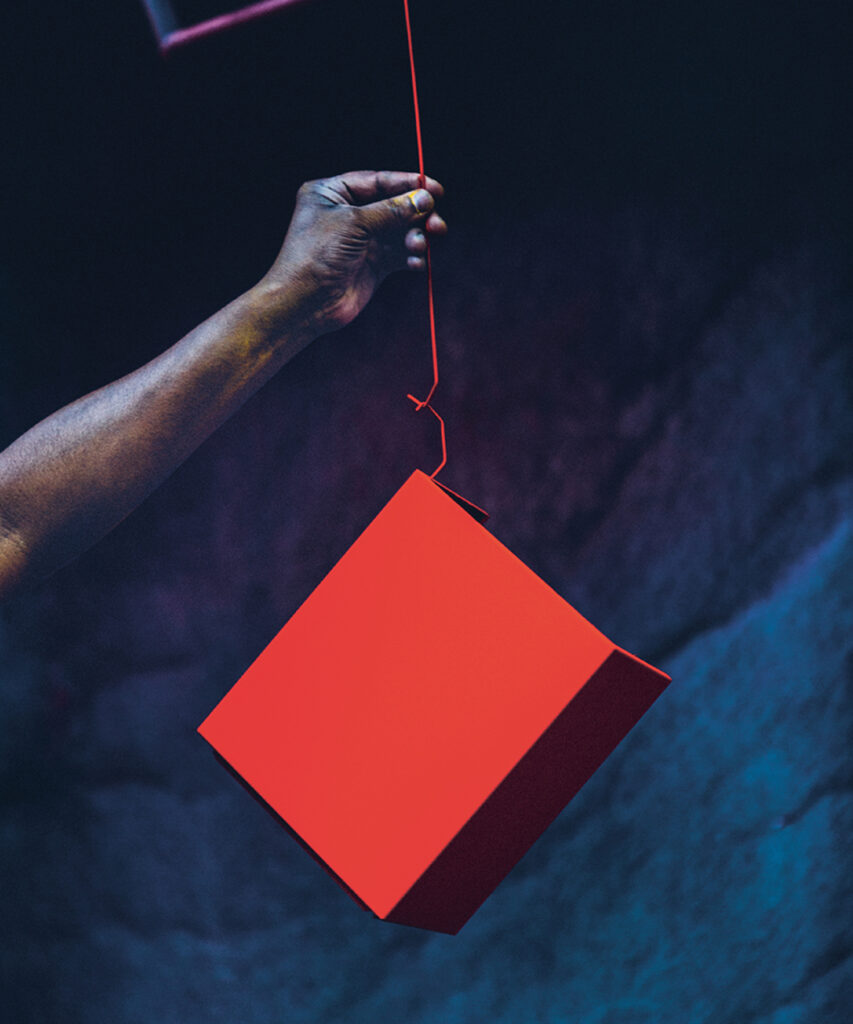
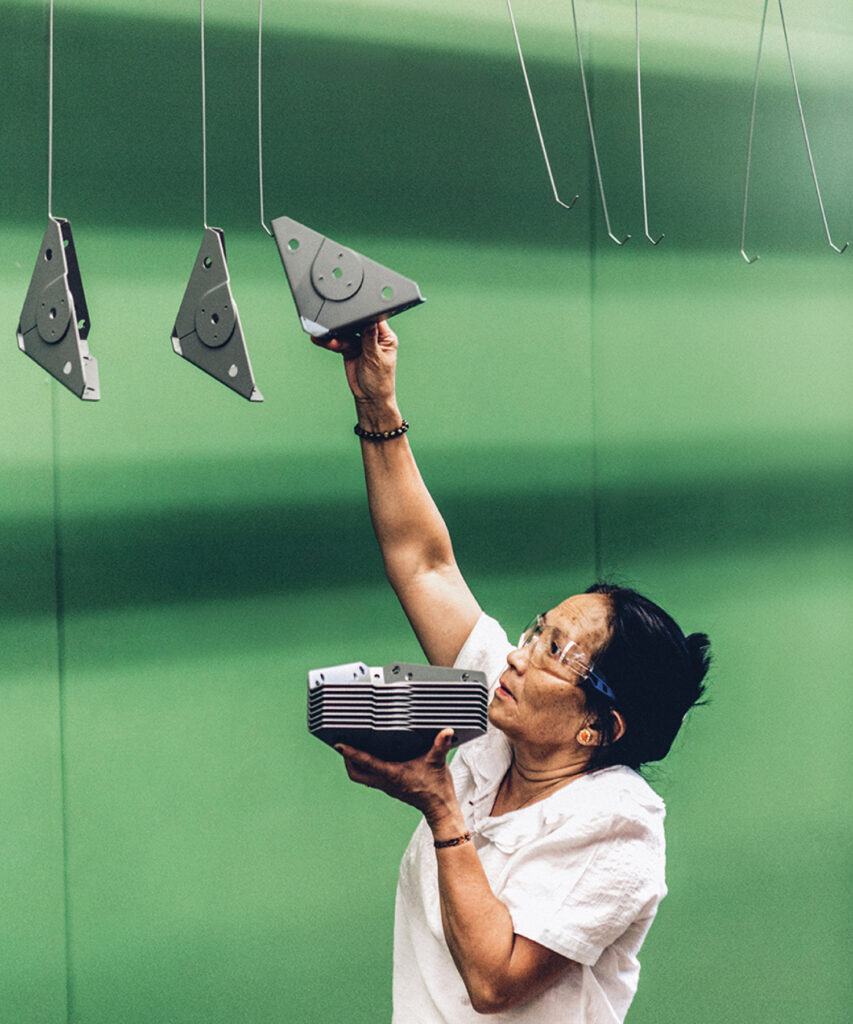
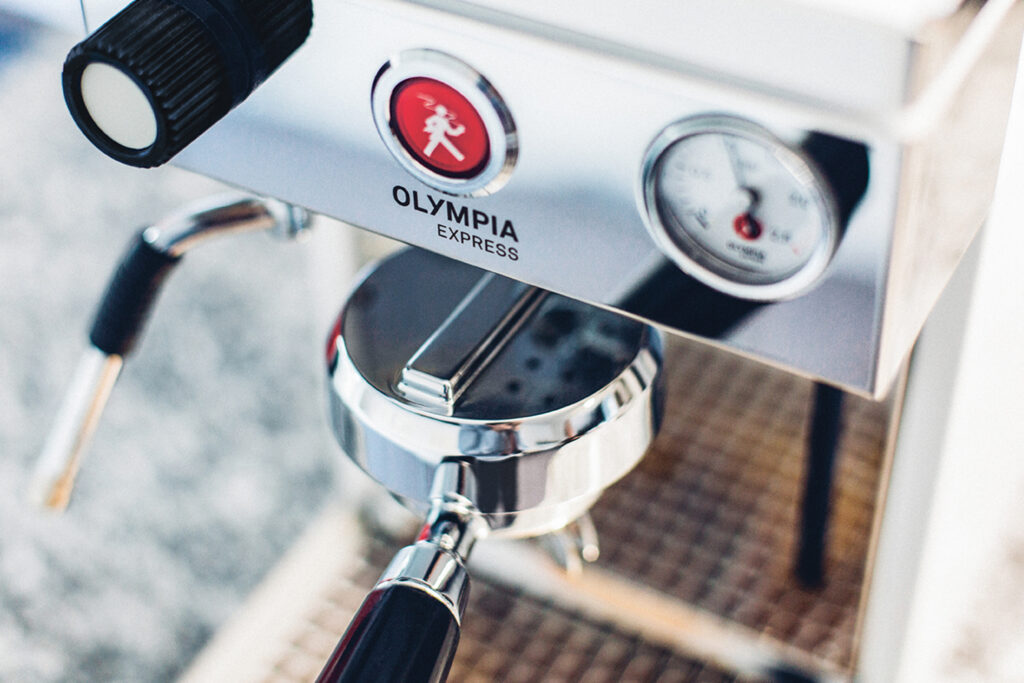
There’s a droning, hissing and thudding noise in the production hall. A laser cutter cuts plates which are bent into shape later on. Every second, a machine throws finished fittings into a basket. “That’s where our roots are”, says Schätti. But it’s not where they want to go. Since 2006, they’ve been producing household appliances, including exhaust hoods for Elektrolux and designer lamps. Not to mention Olympia espresso machines. Chromium plates lie on a table. Chromium steel is what lies behind the machines’ superior quality. It gives them a stable weight and ensures a high water quality because it prevents lead or nickel residues from contaminating the water.
The machines come in red, white and black; a limited anniversary edition of the Cremina features the colour brown. For Schätti, Olympia is more than just a prestigious showcase project. The expertise in espresso machines also yields lucrative orders. A digital robot, especially purchased for the purpose, therefore builds components for another Swiss coffee machine manufacturer, Thermoplan, which is supplying every branch of one of the largest coffeehouse chains worldwide with new technology.
The rock faces outside the windows of the production hall are picture-perfect. But Ravi, the welder, hasn’t got eyes for that. After all he’s not messing with any old component, but with a piece of Swiss precision engineering.
This article was first published in the autumn print edition of 30 Grad in 2017.